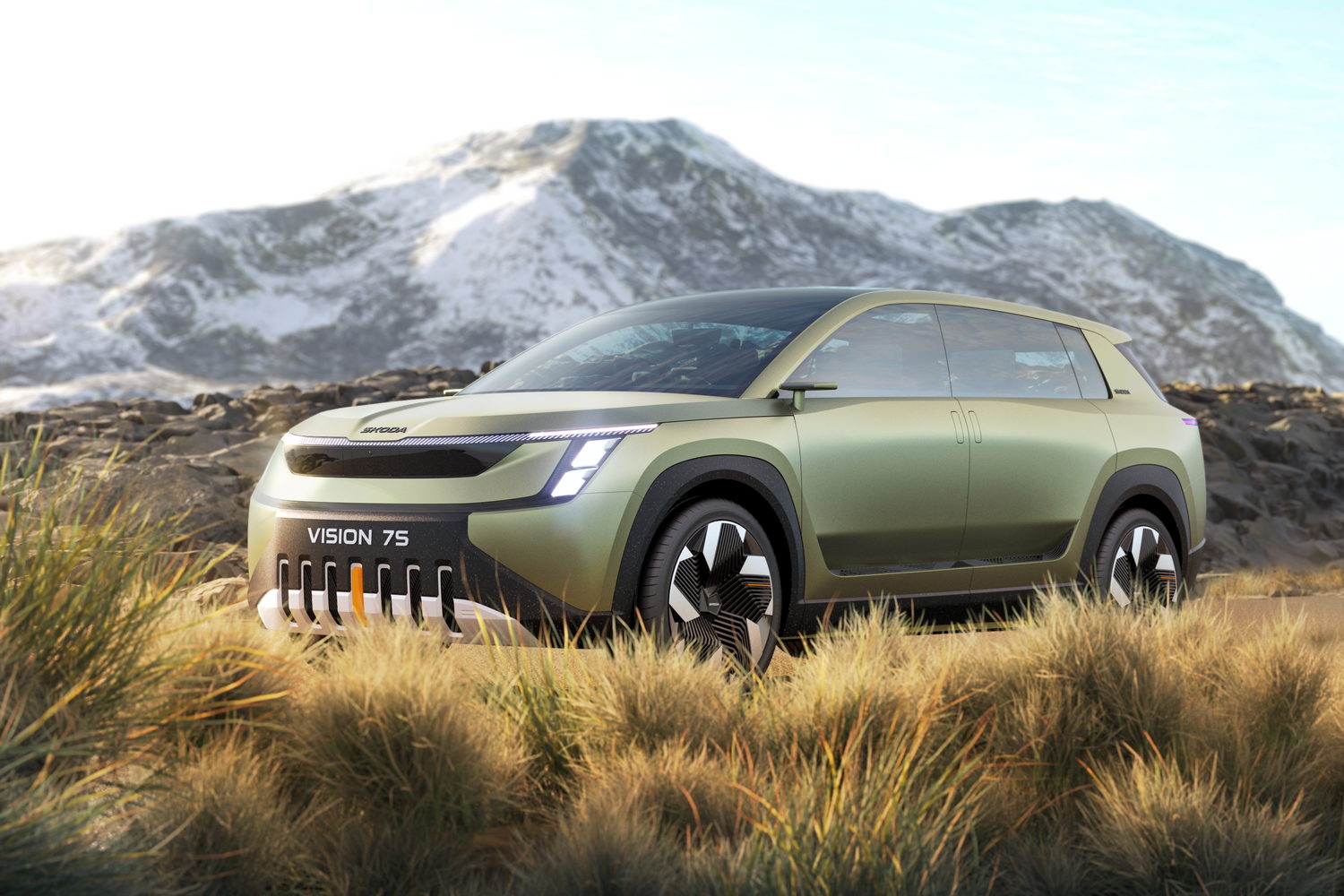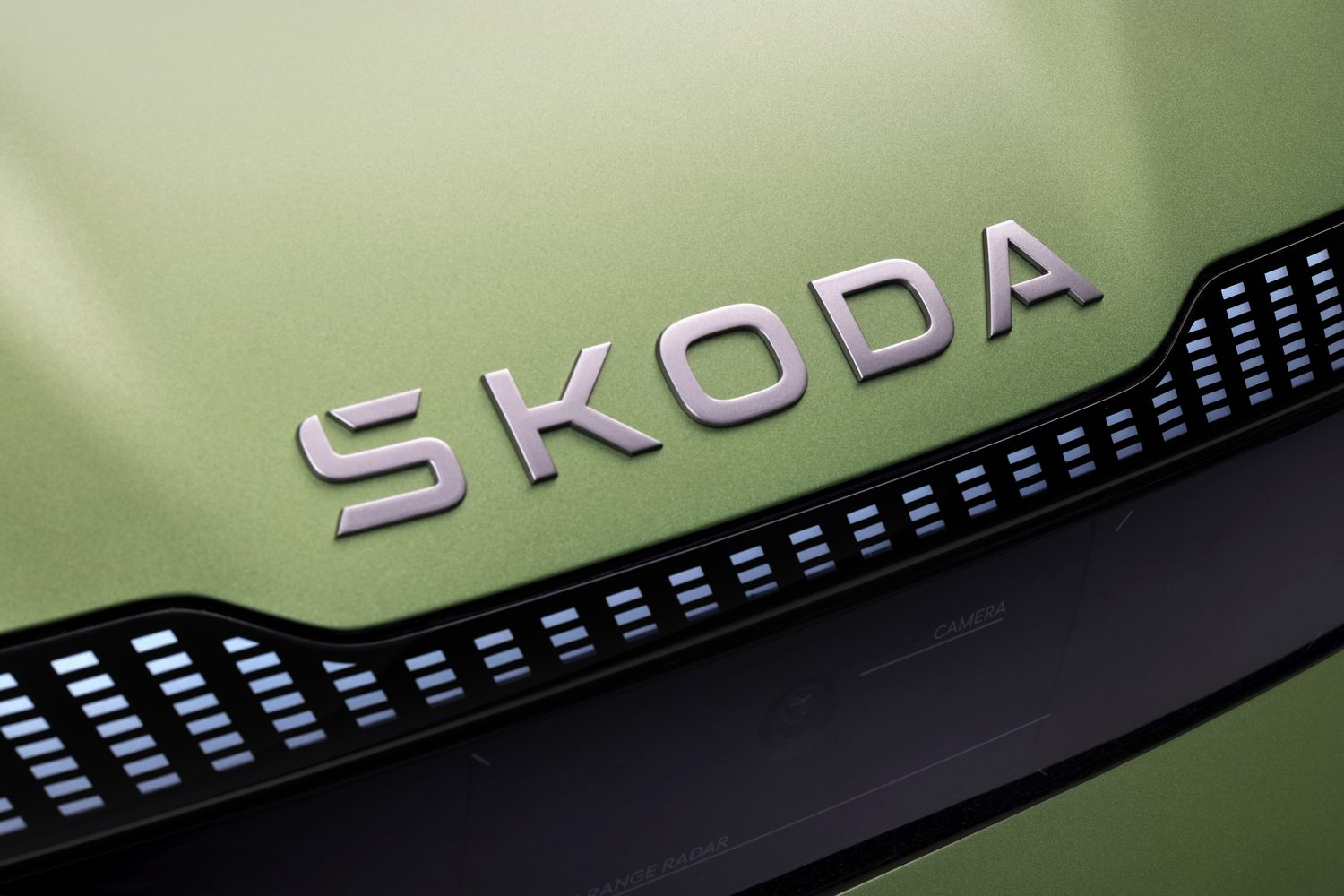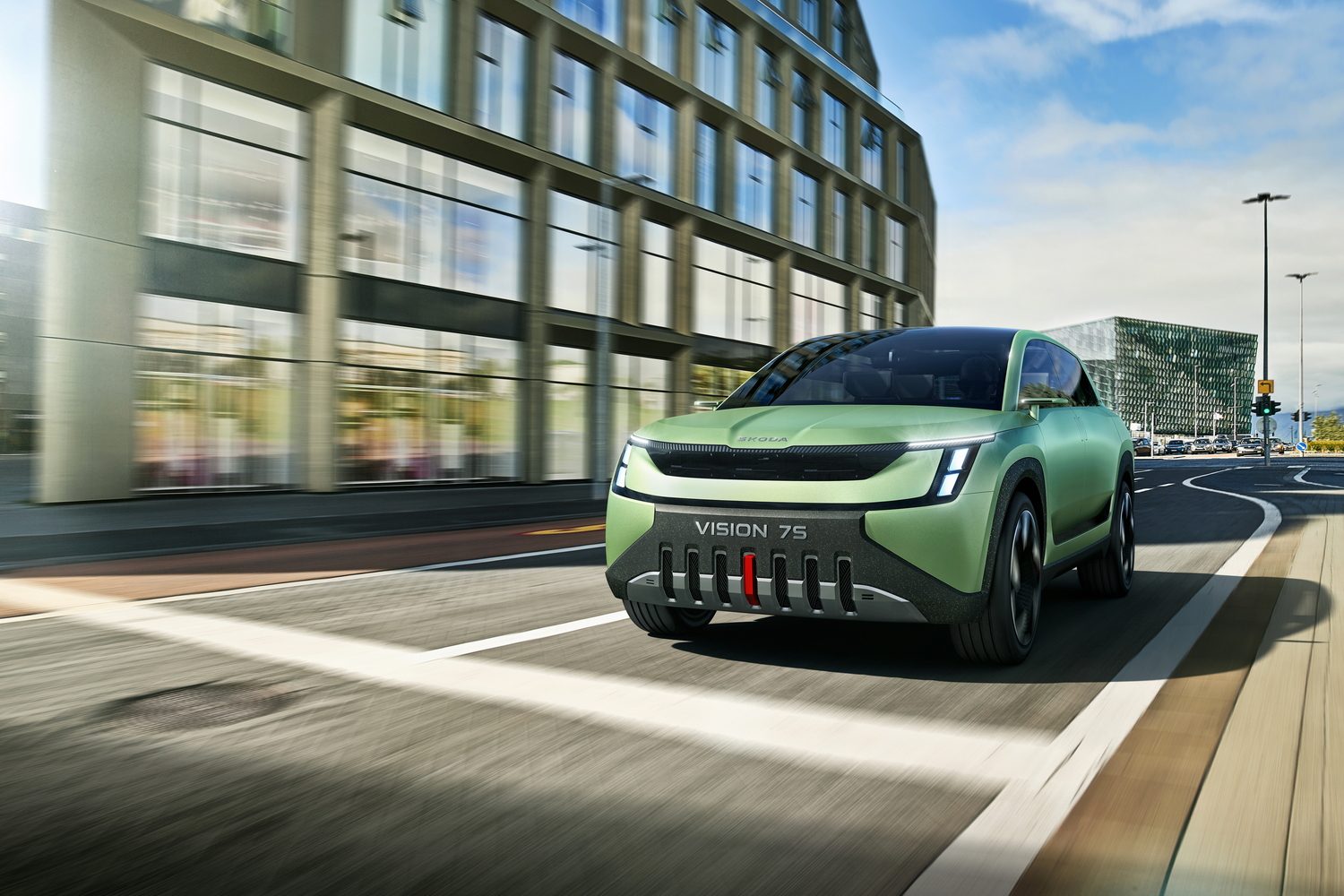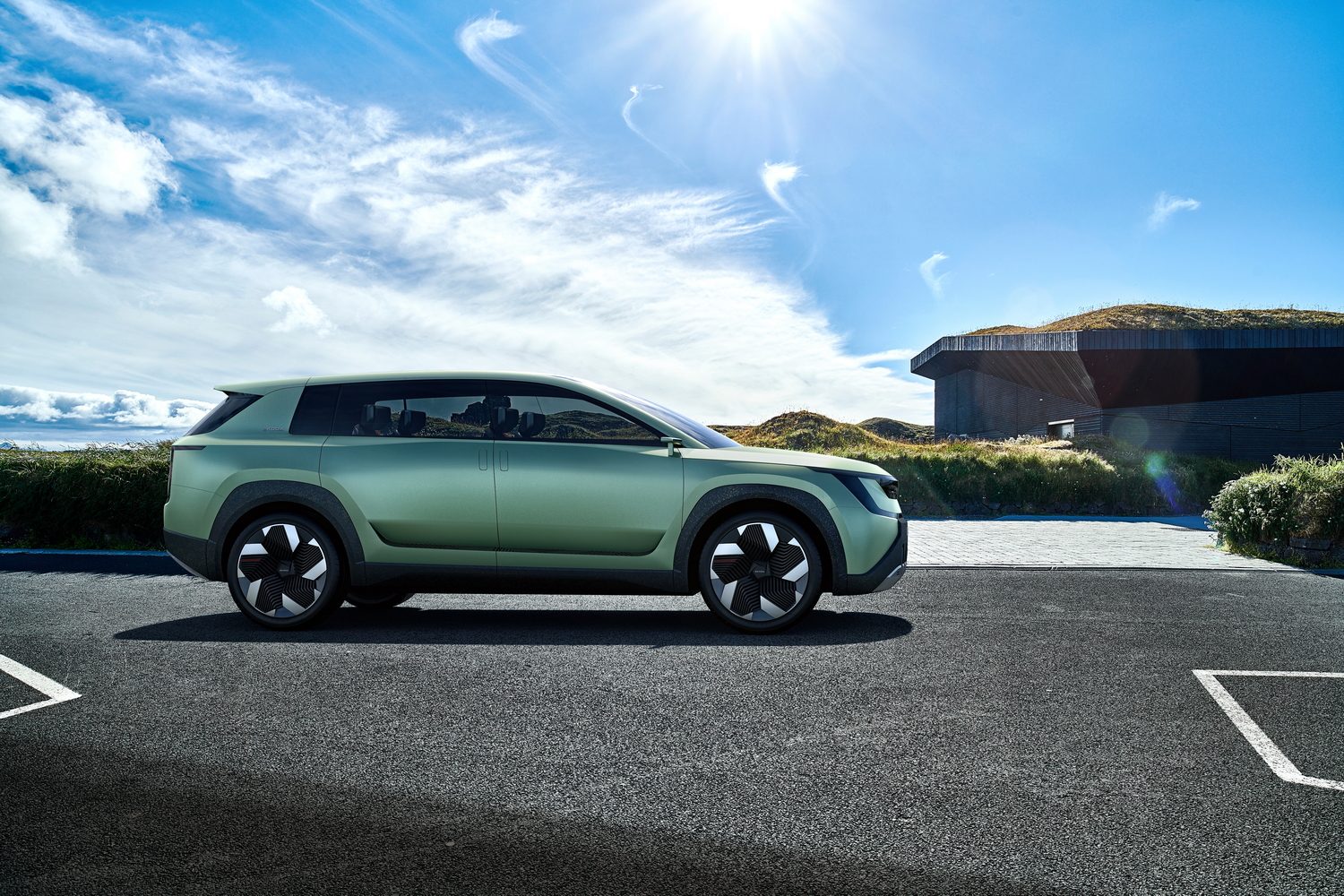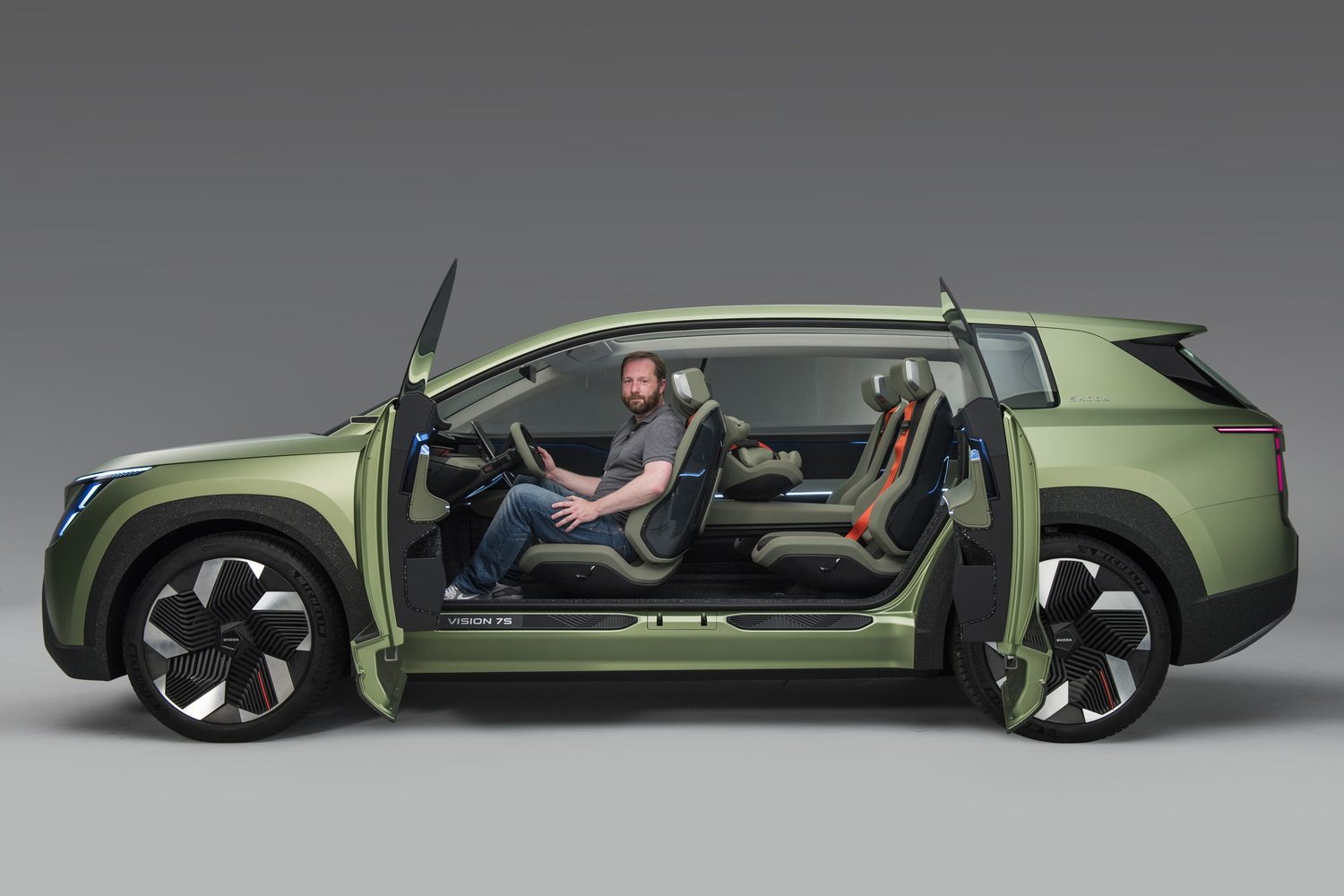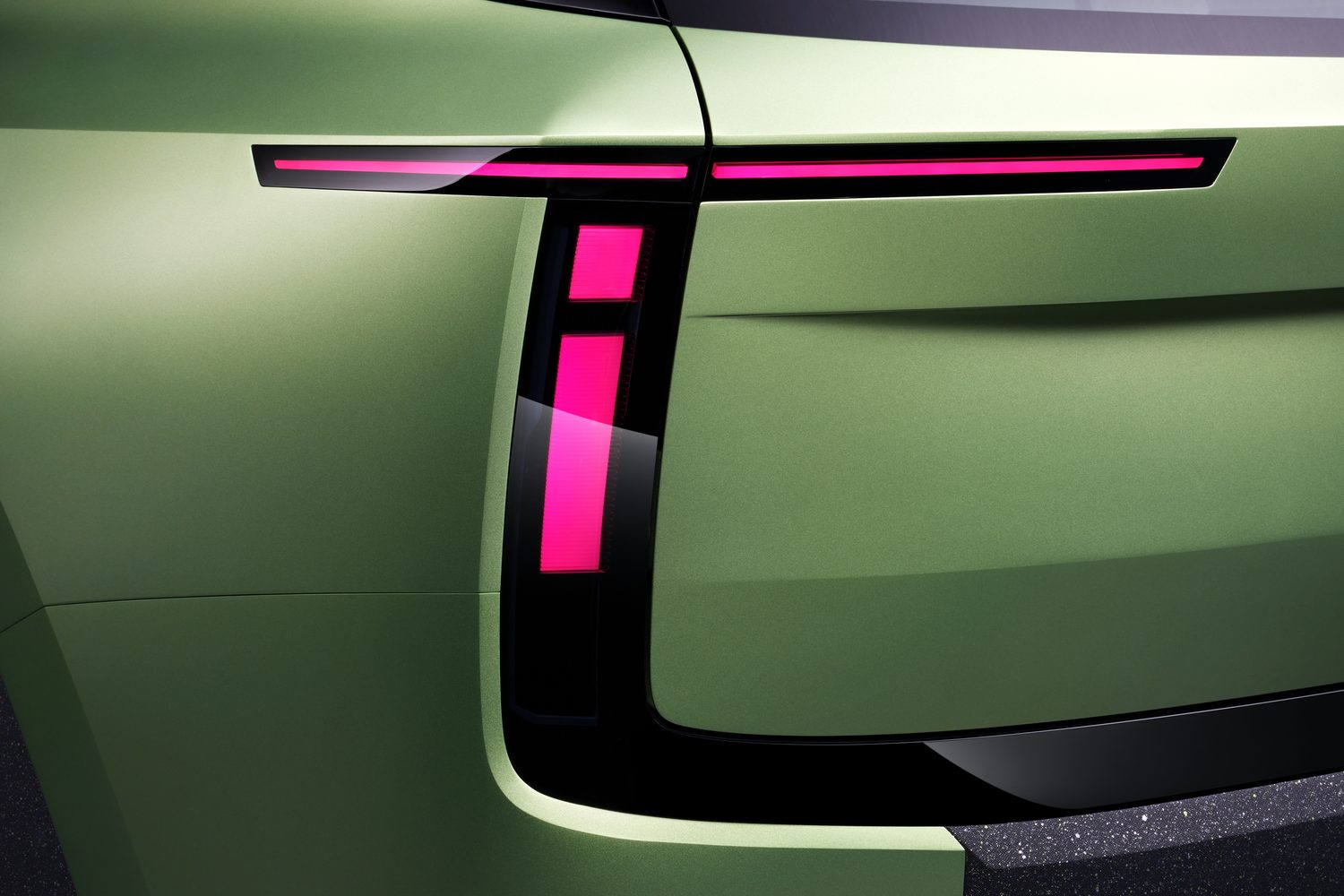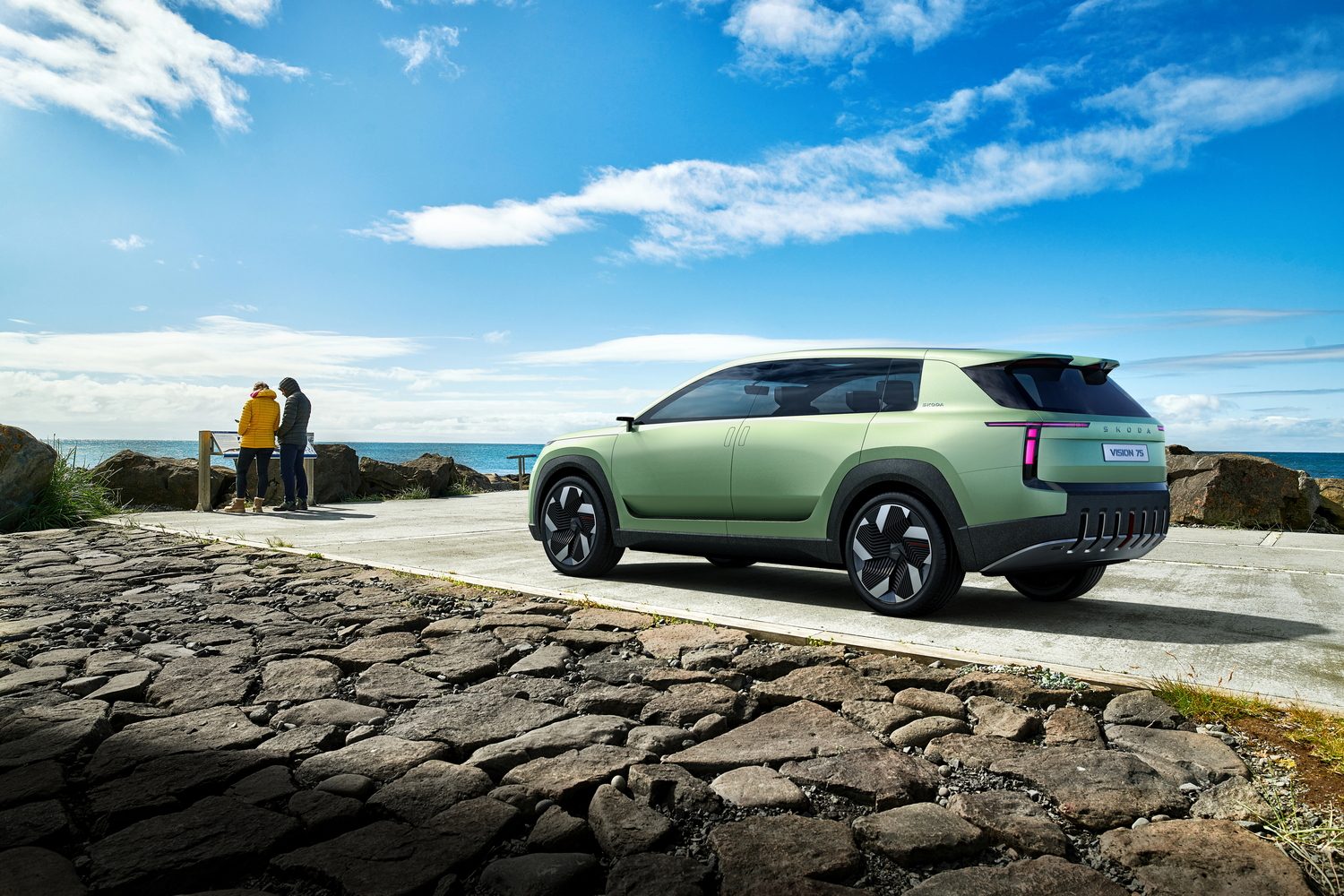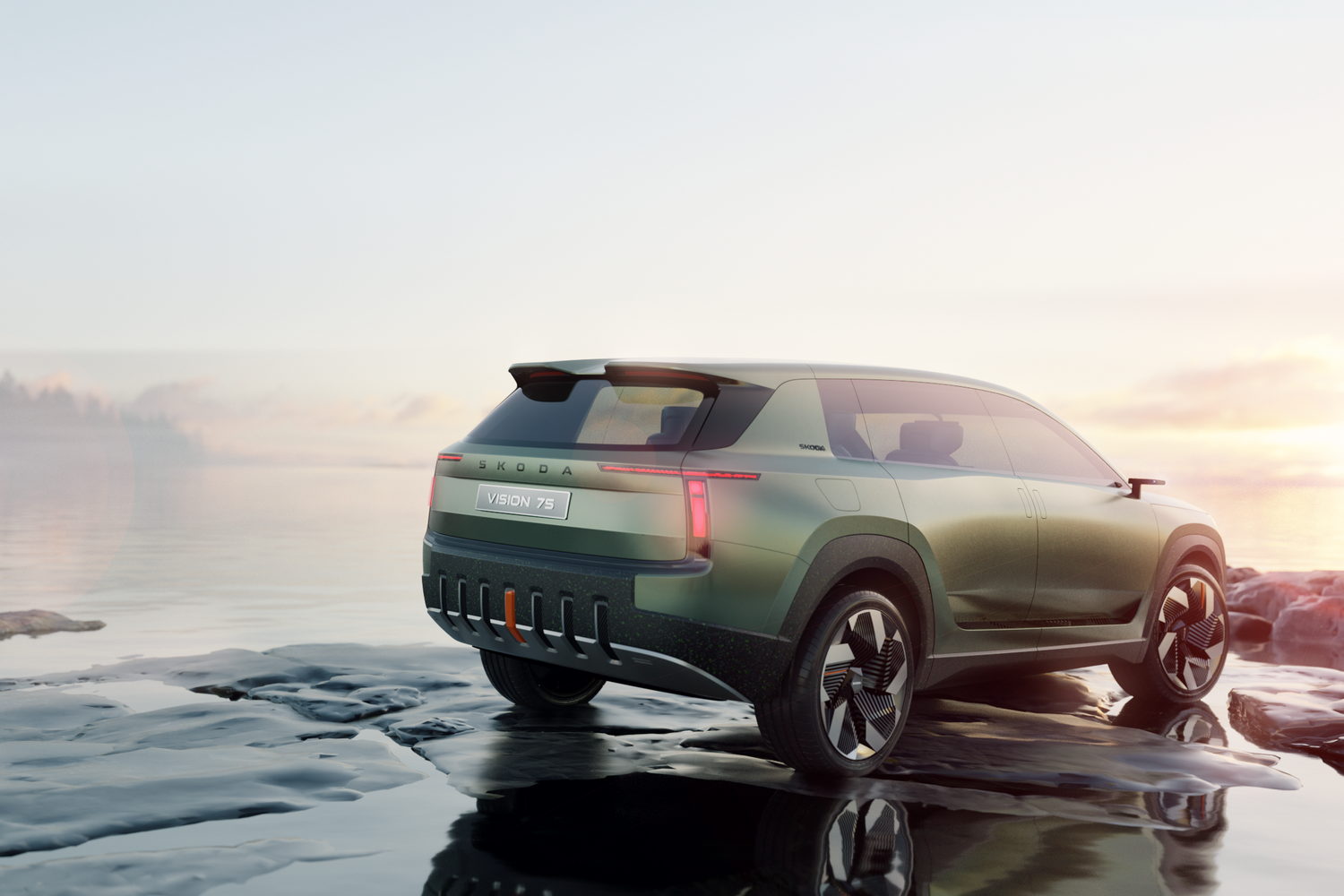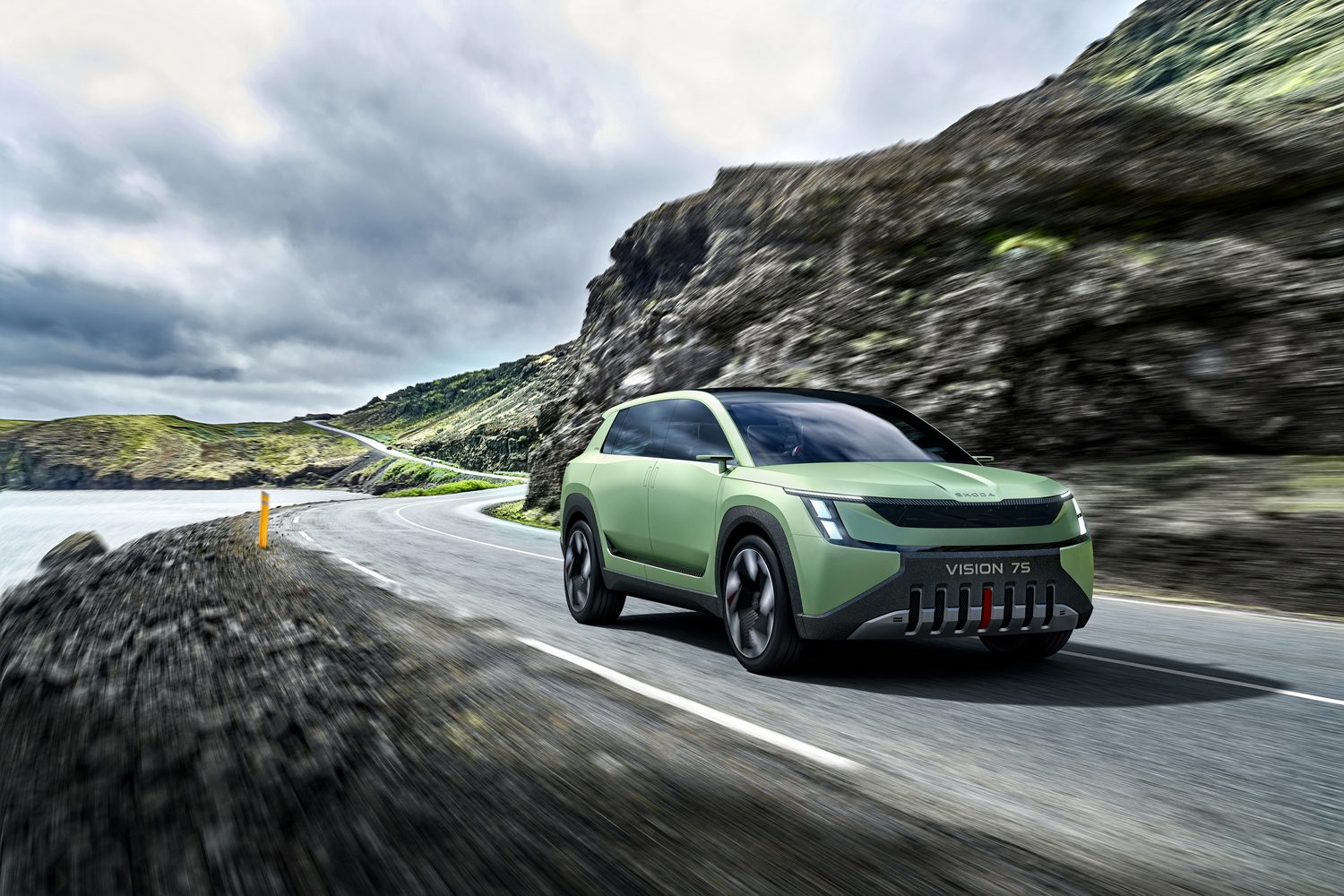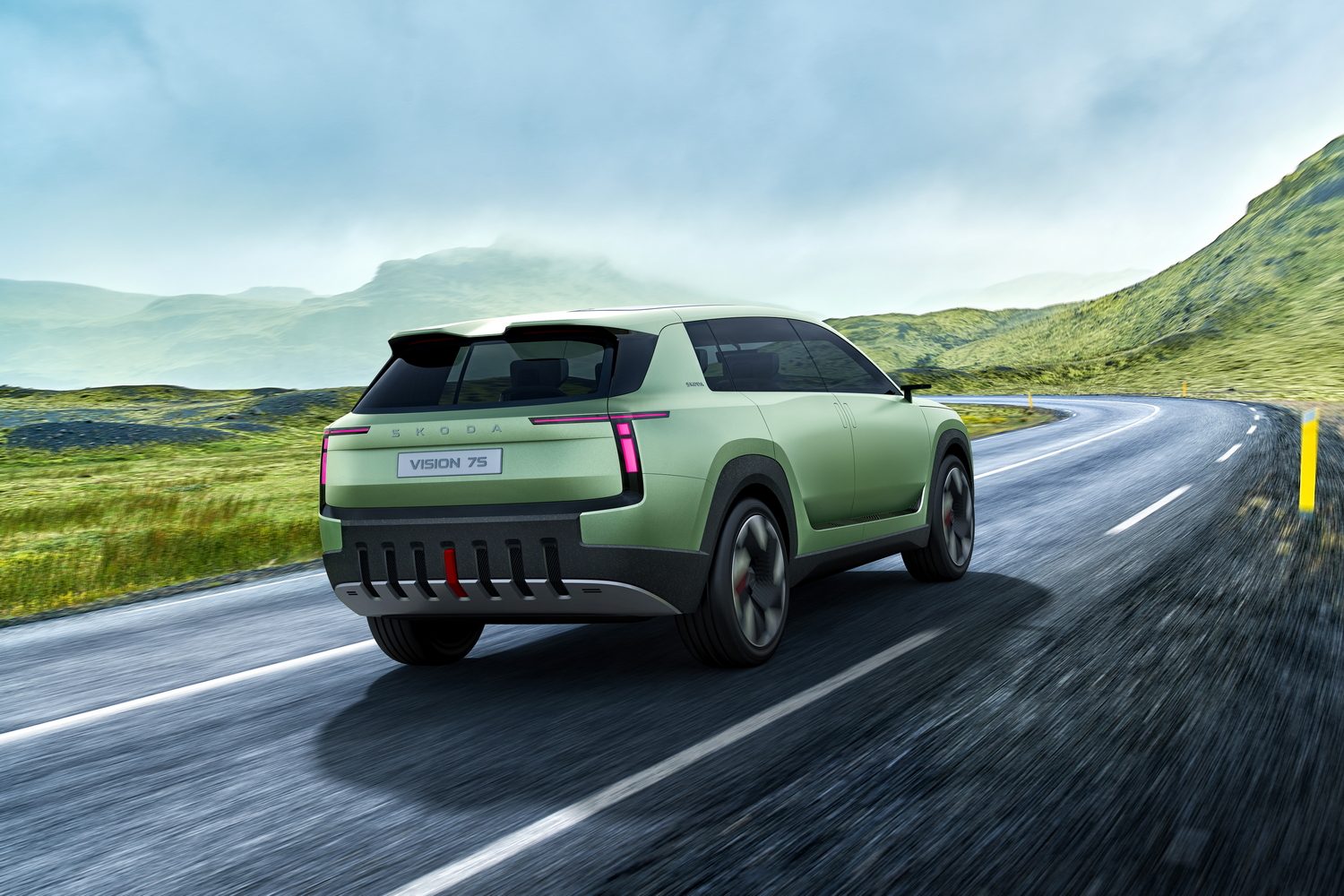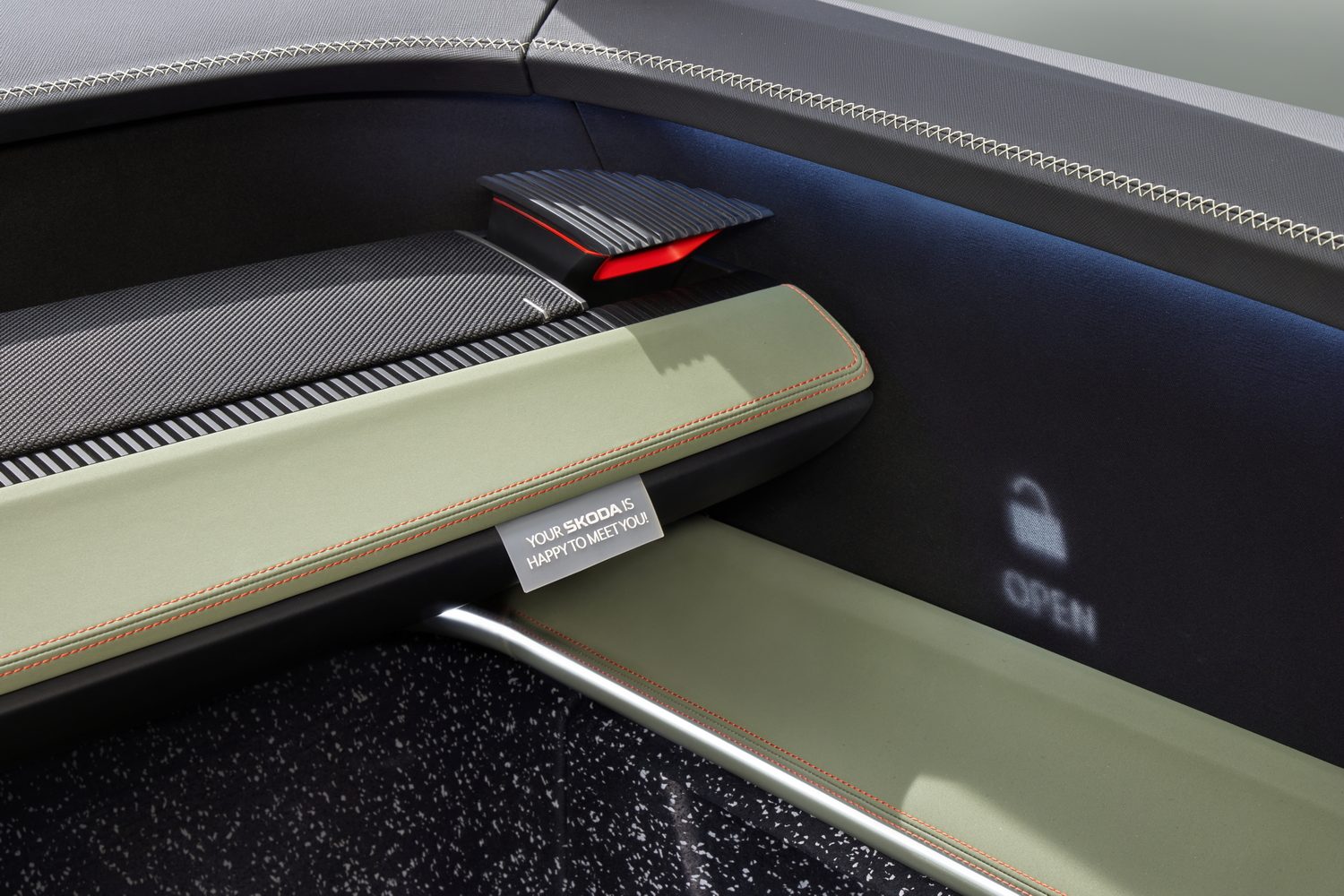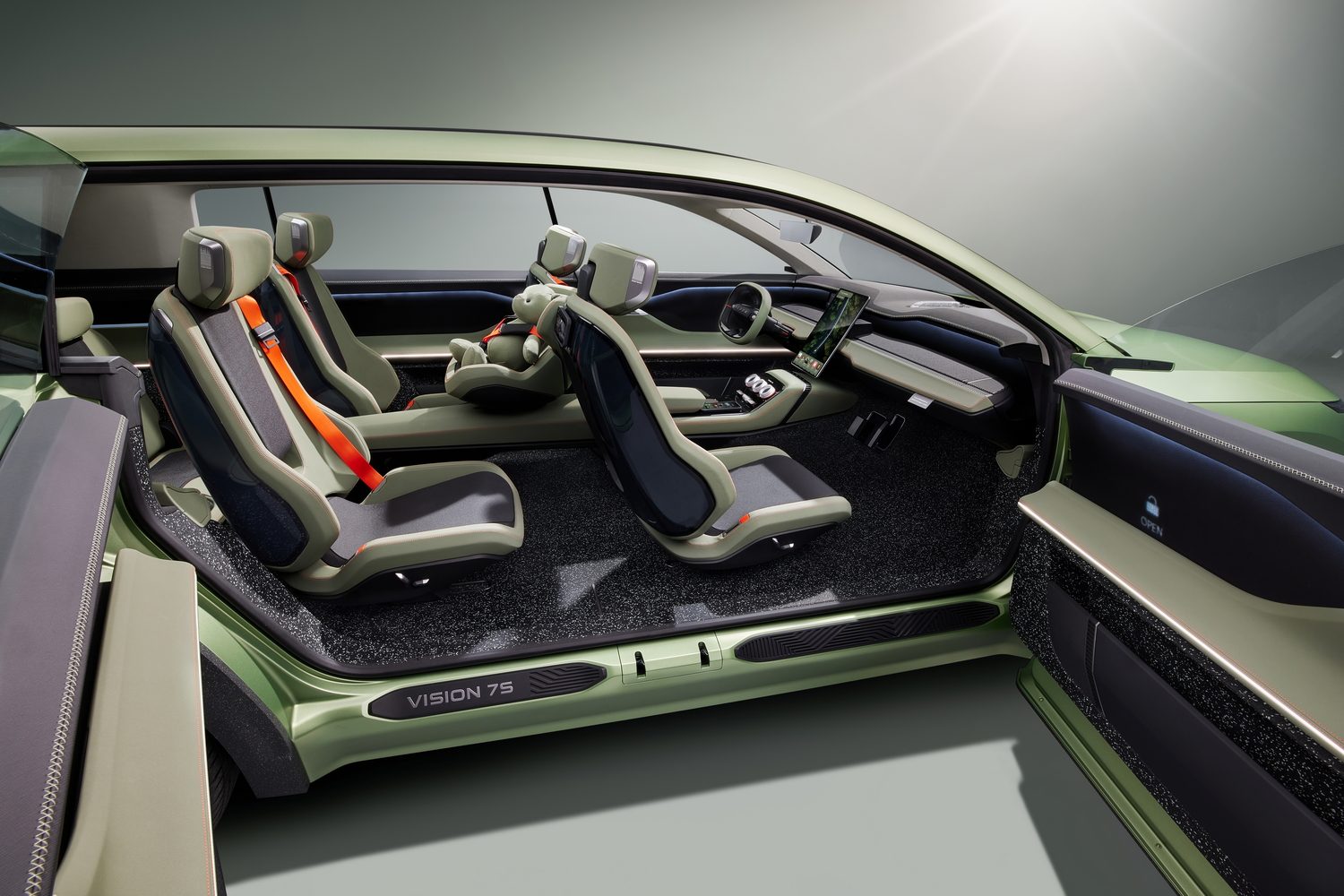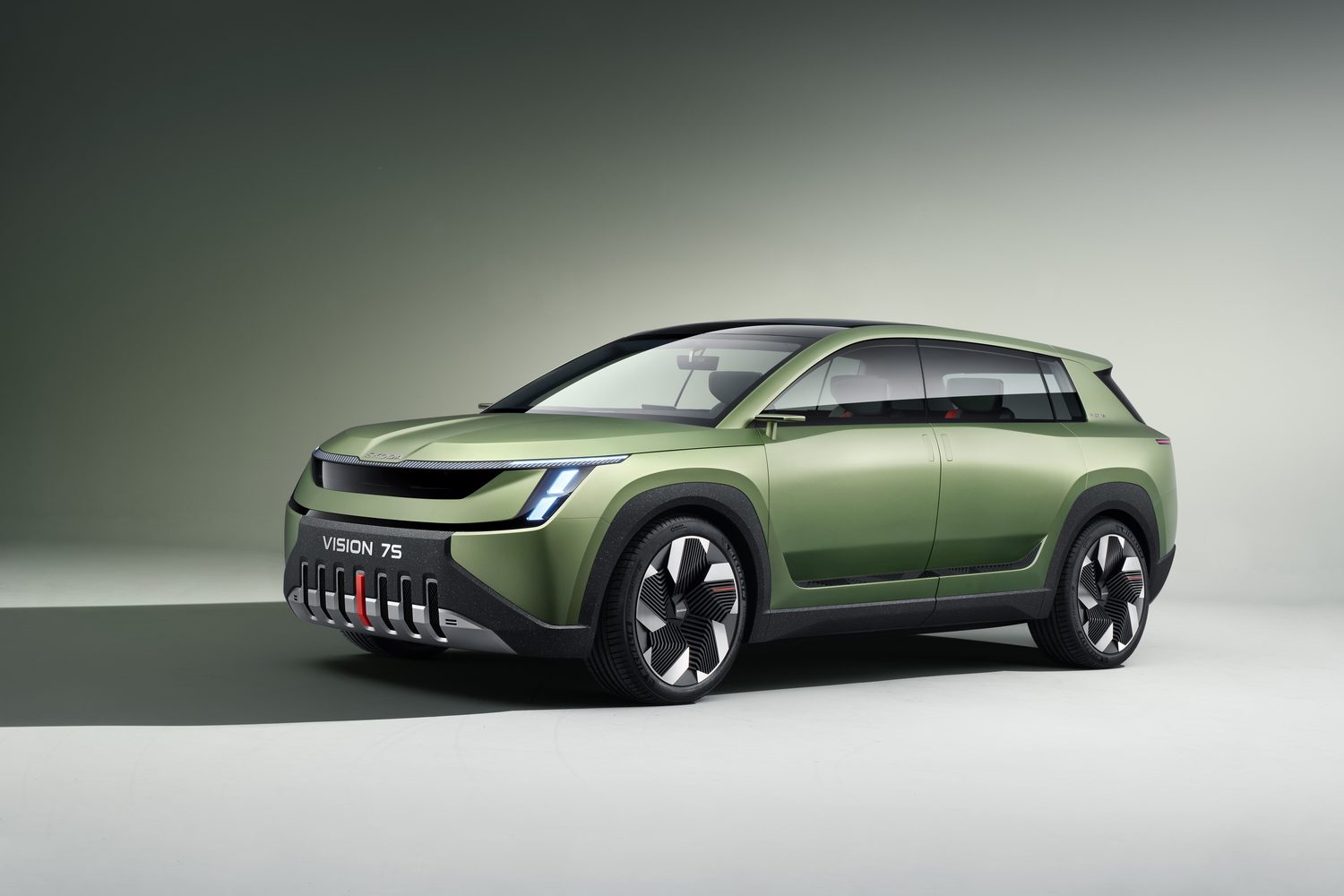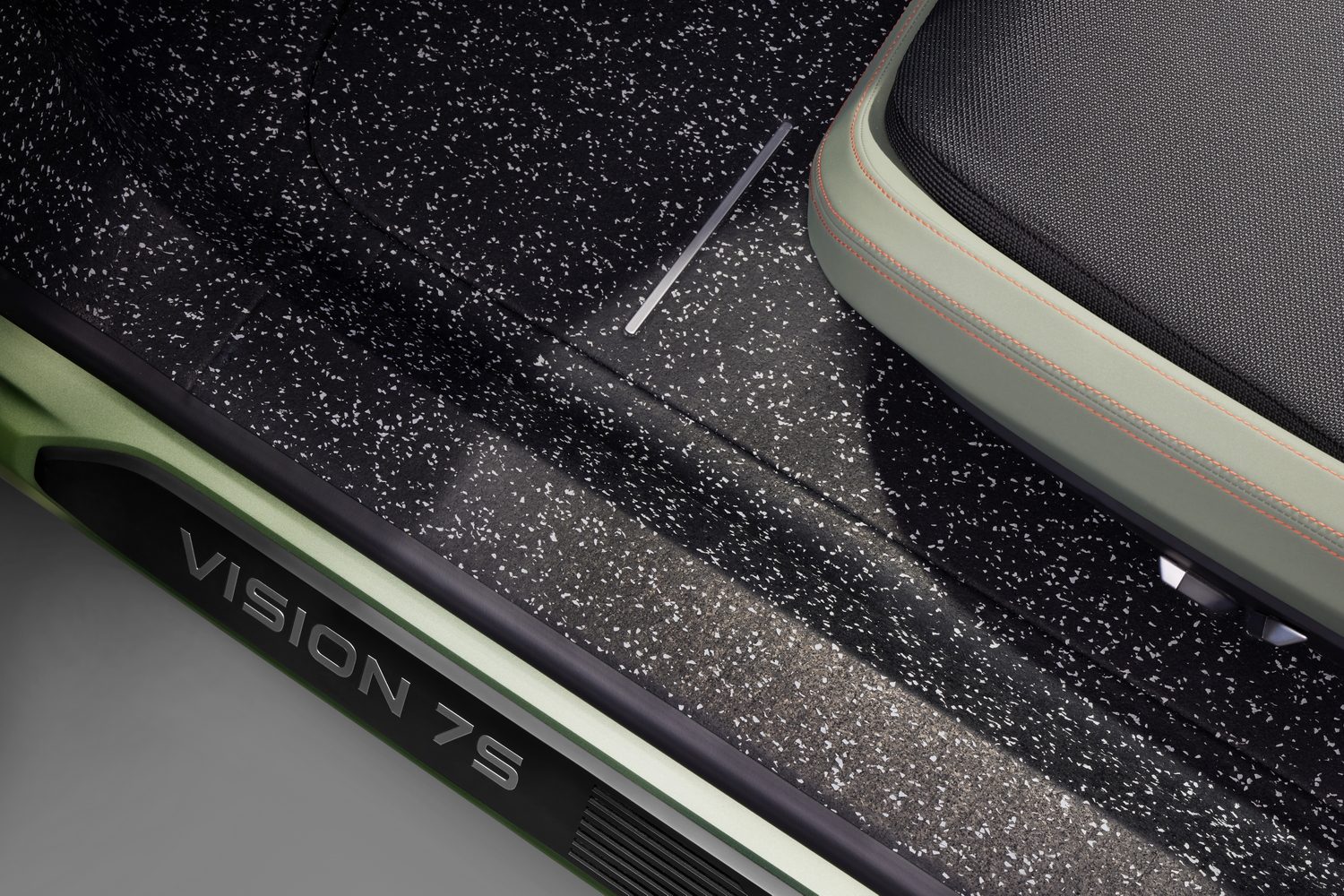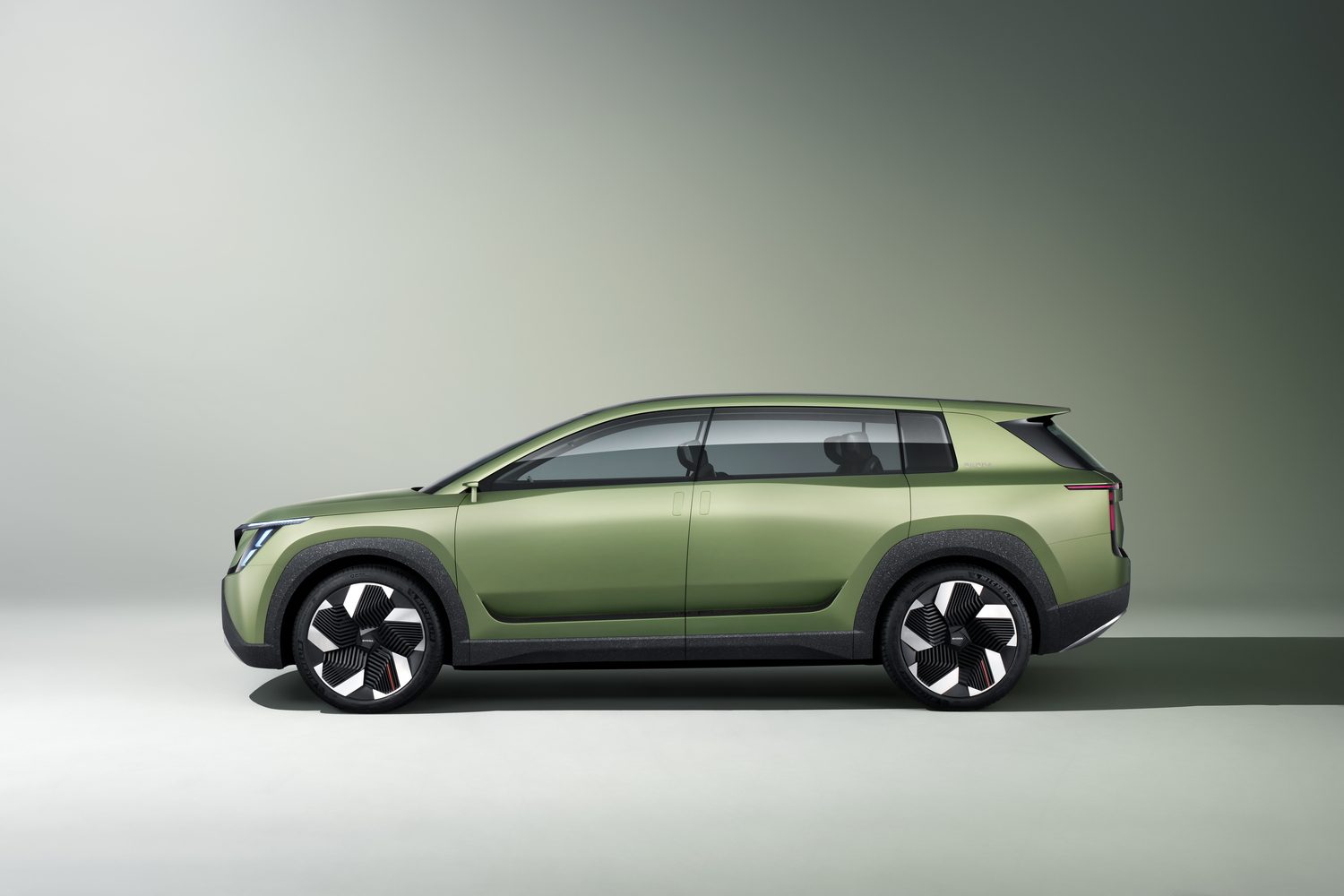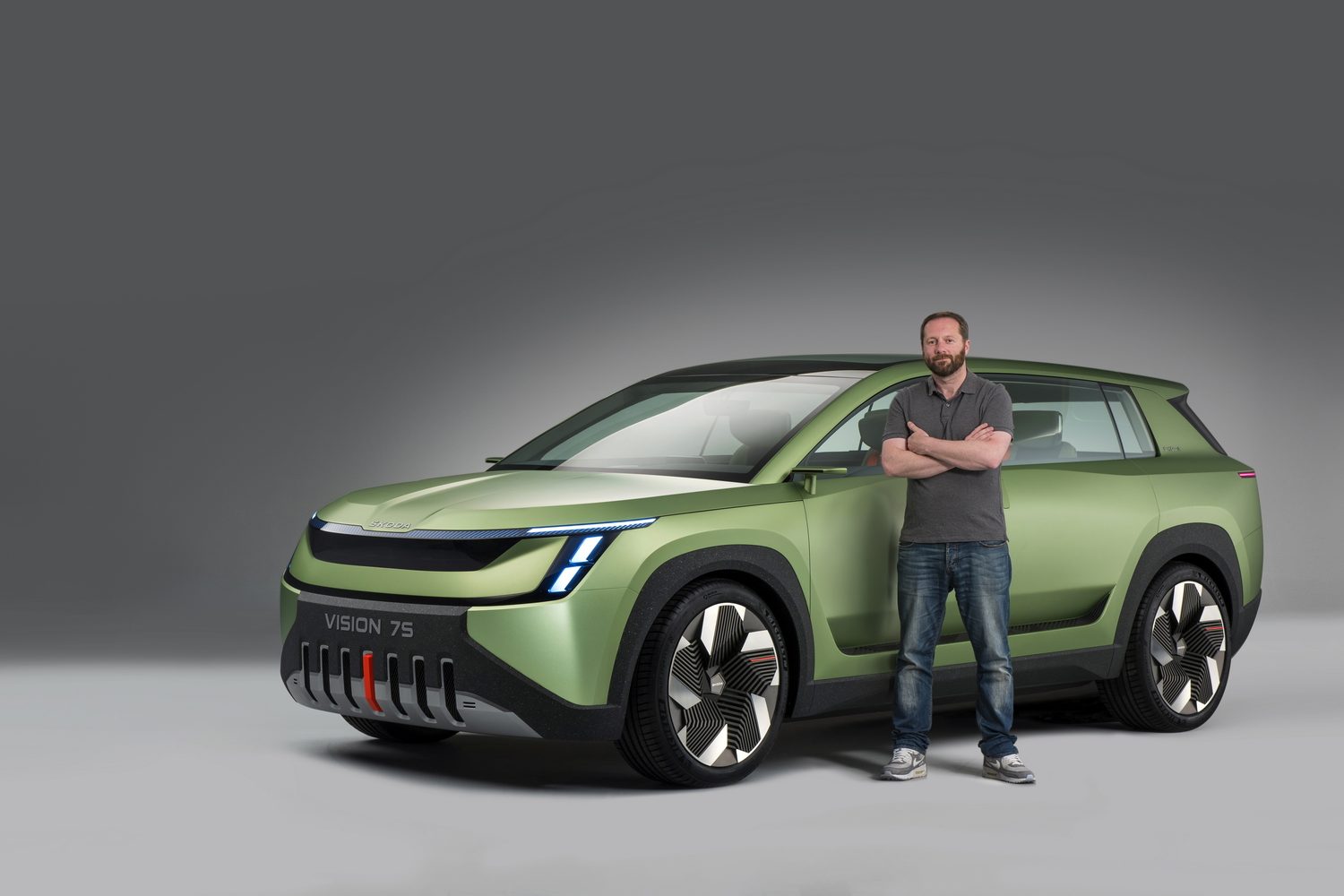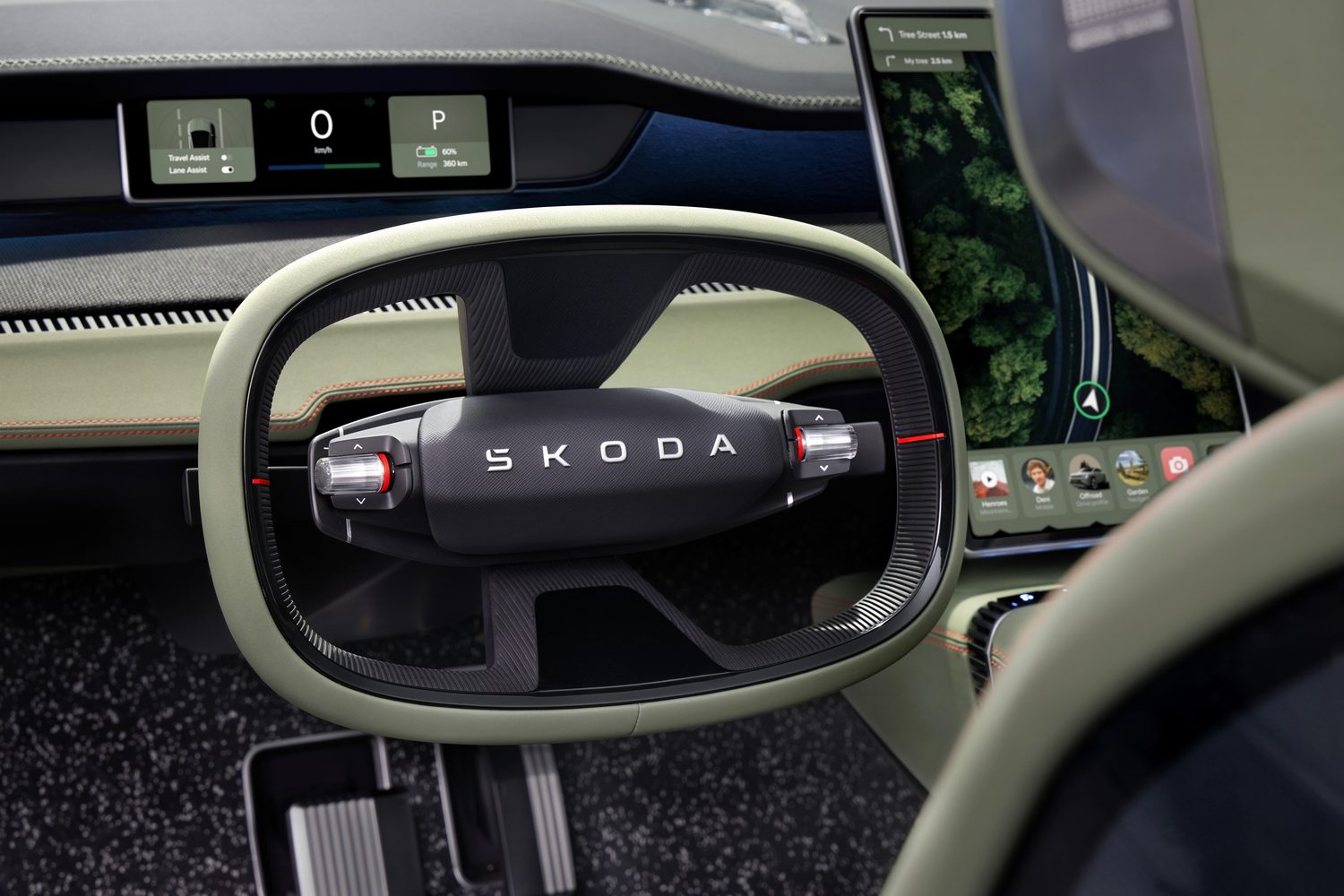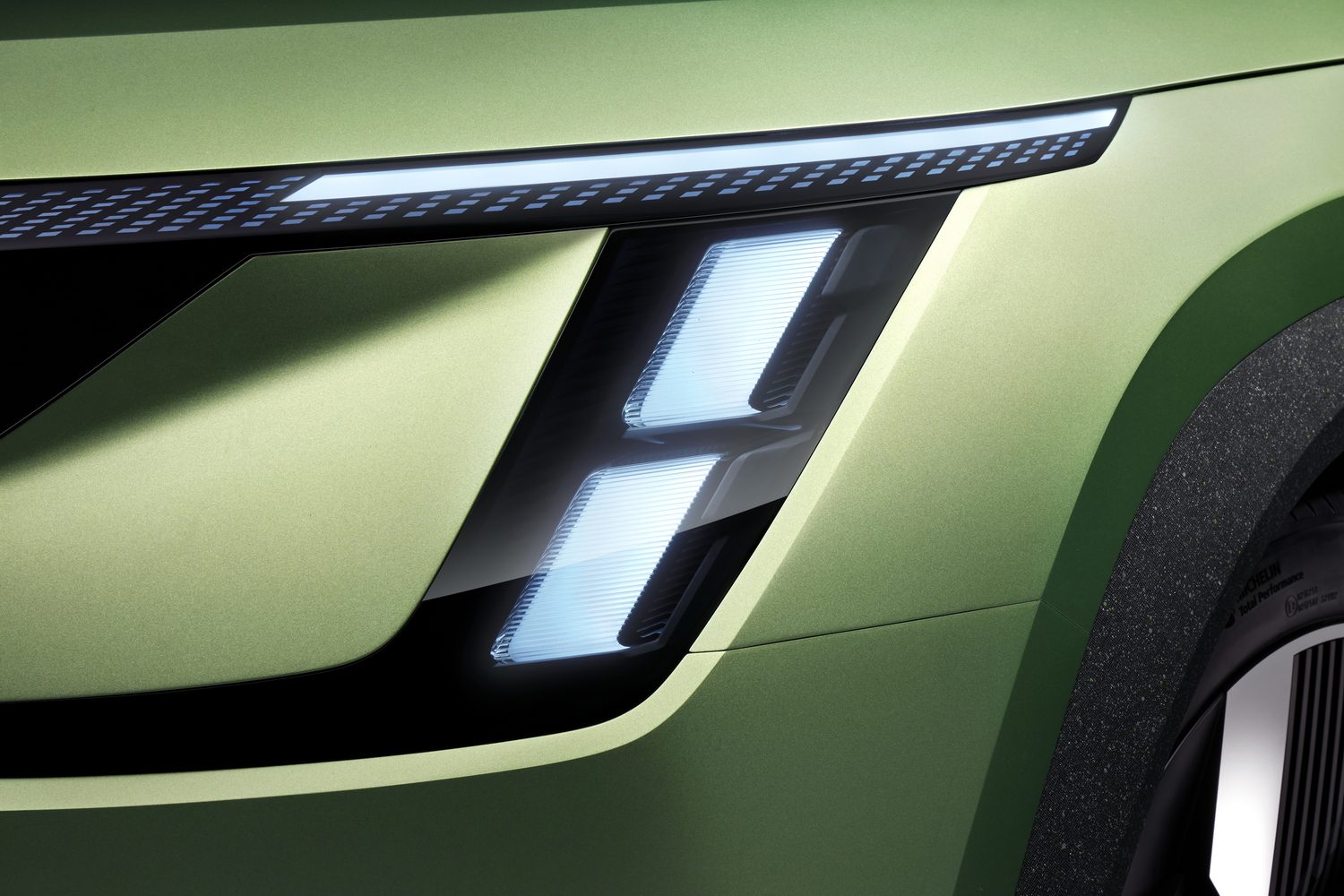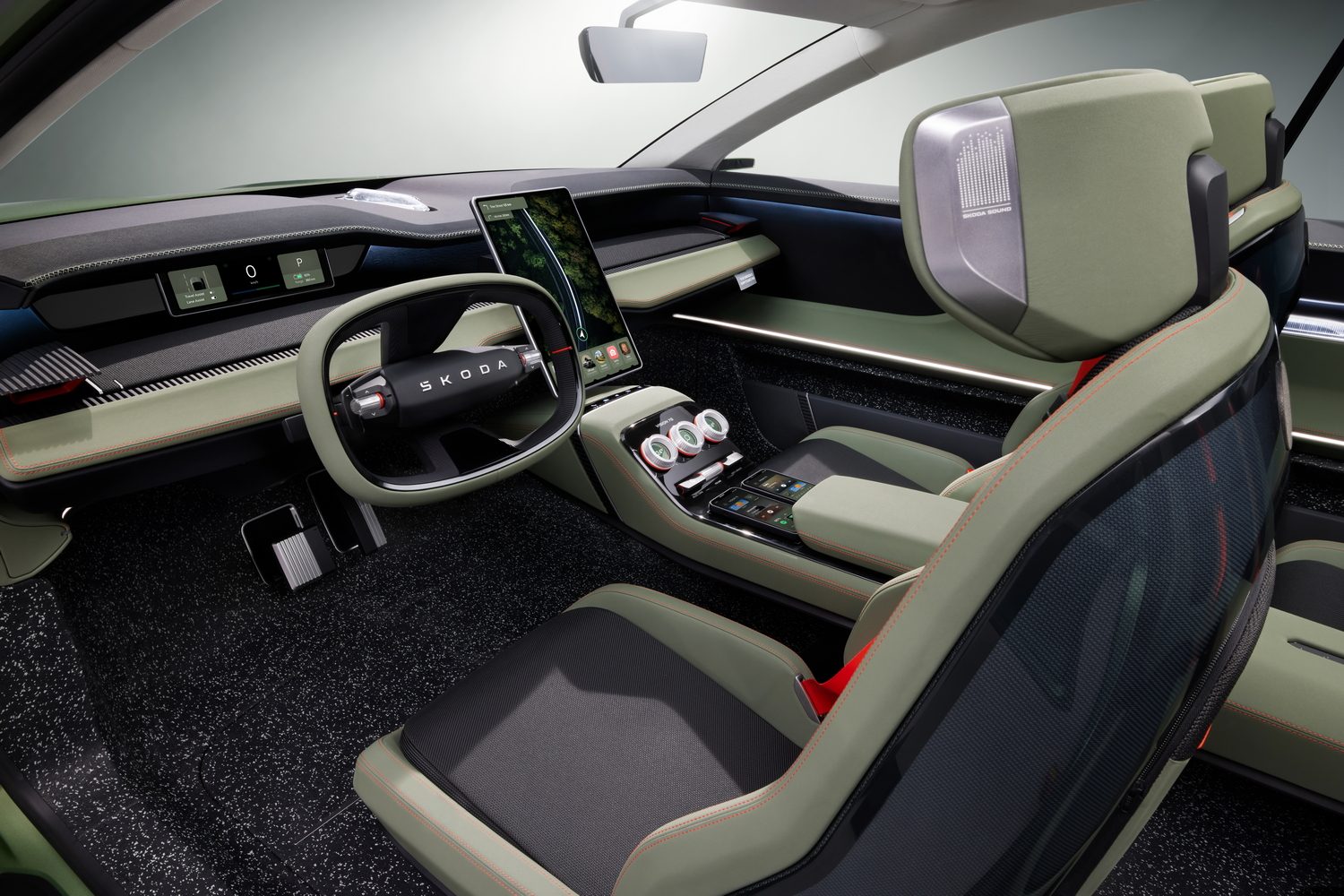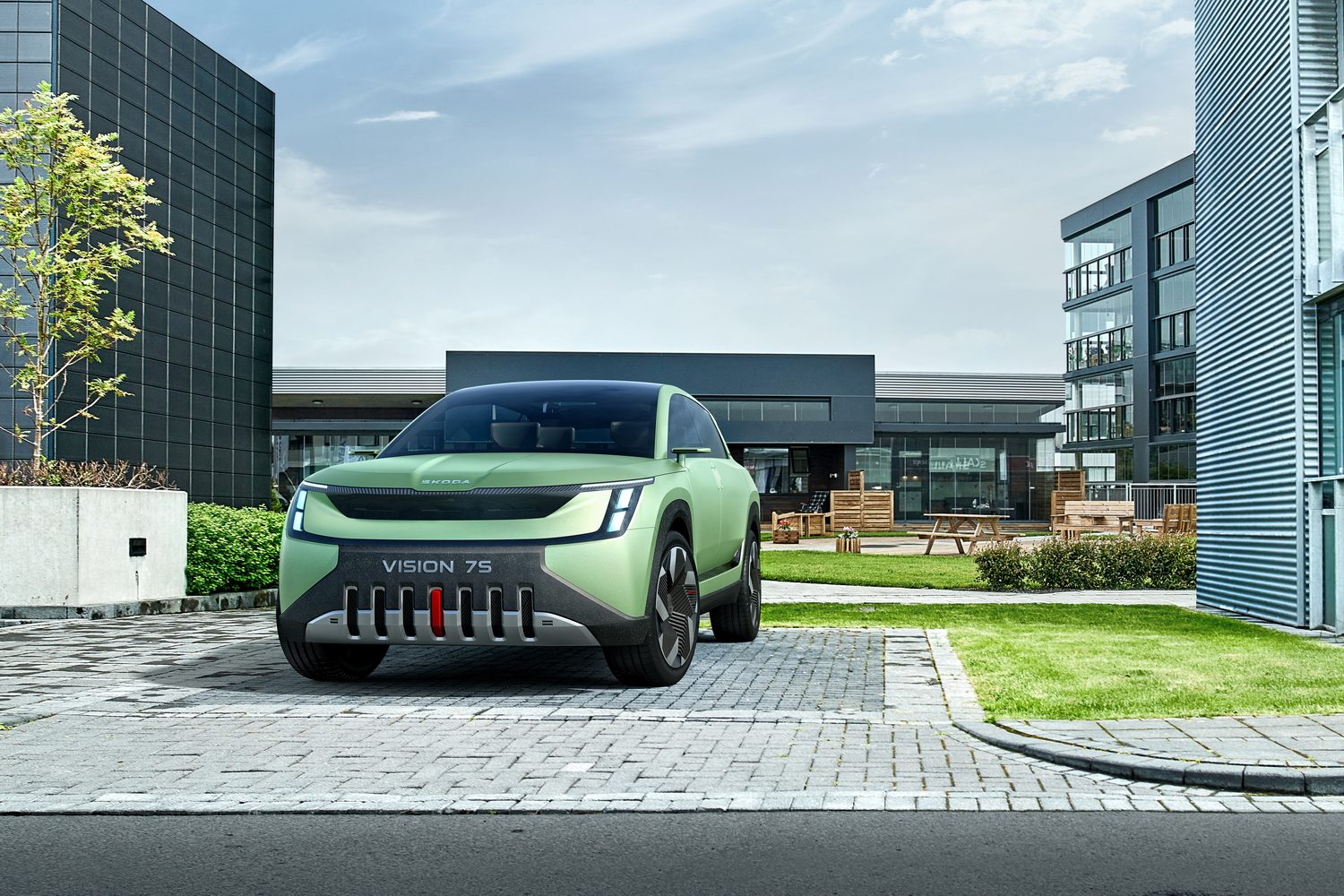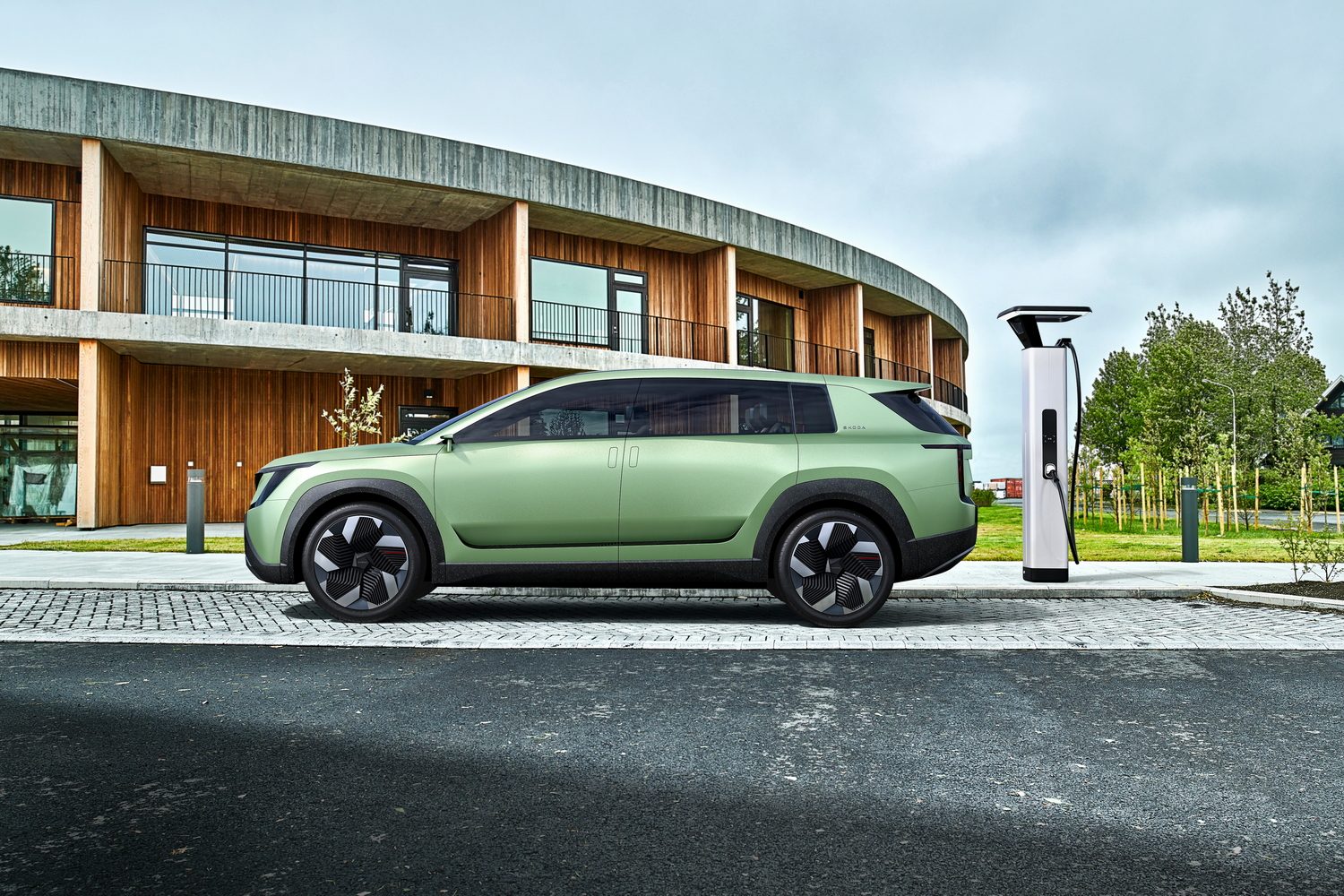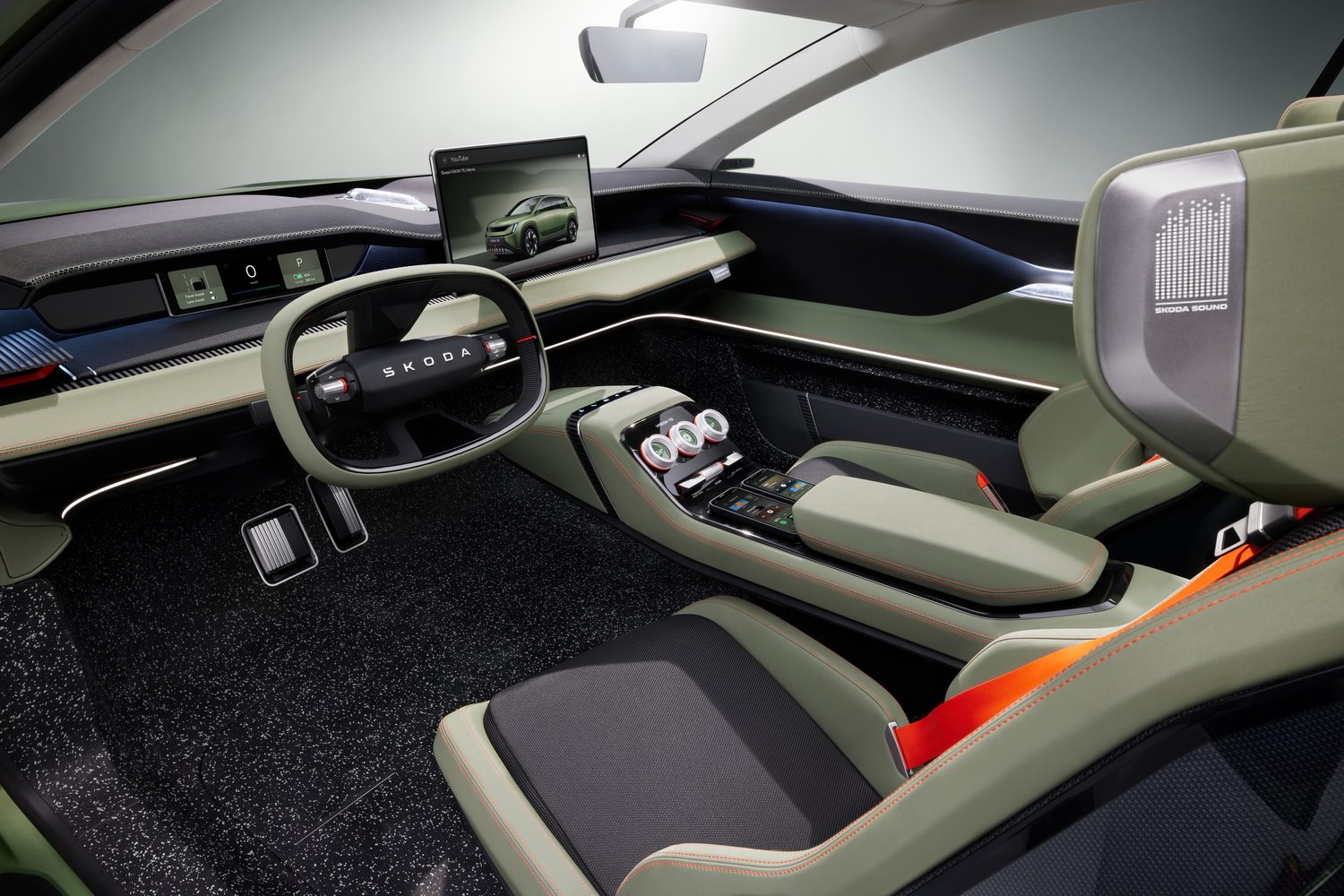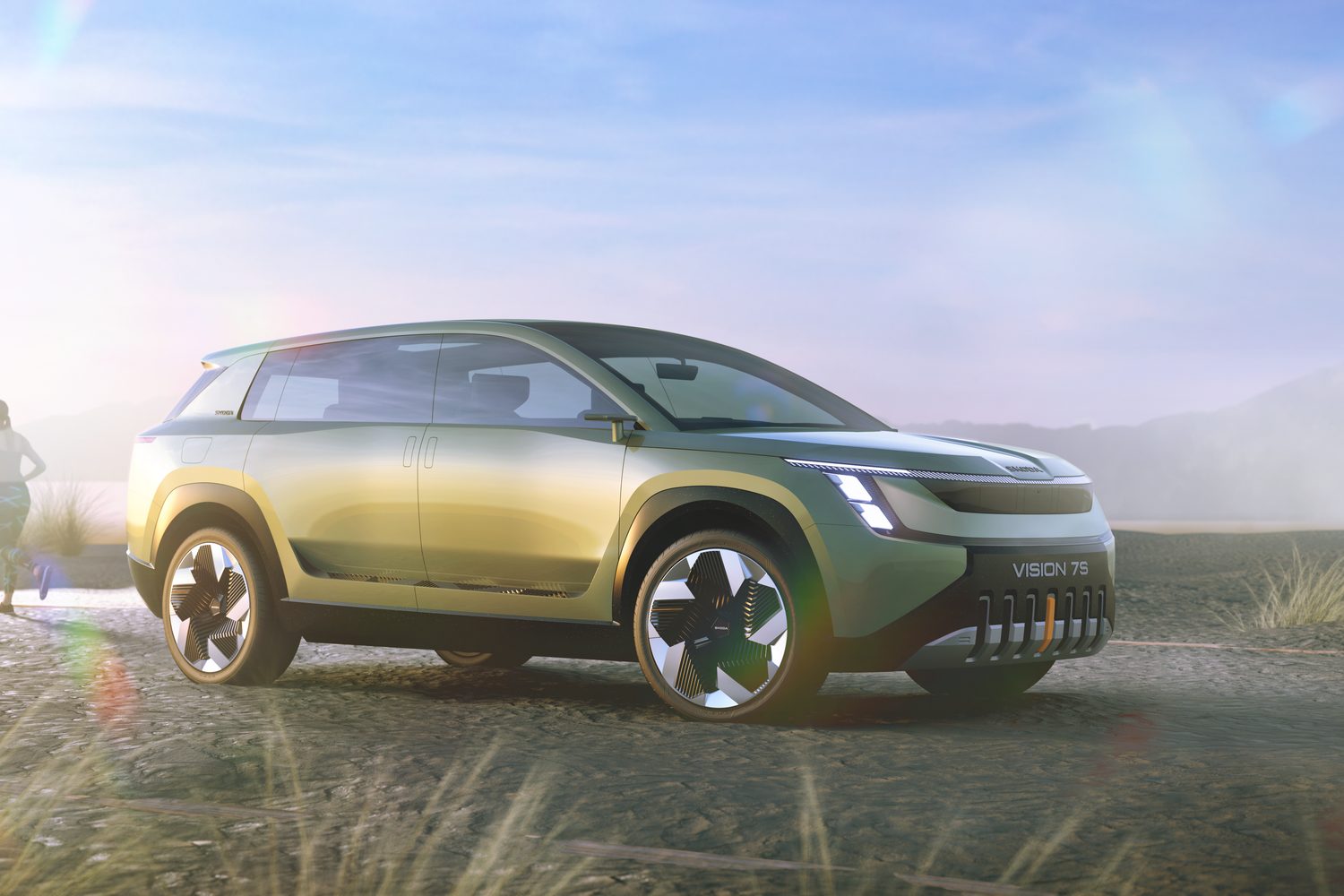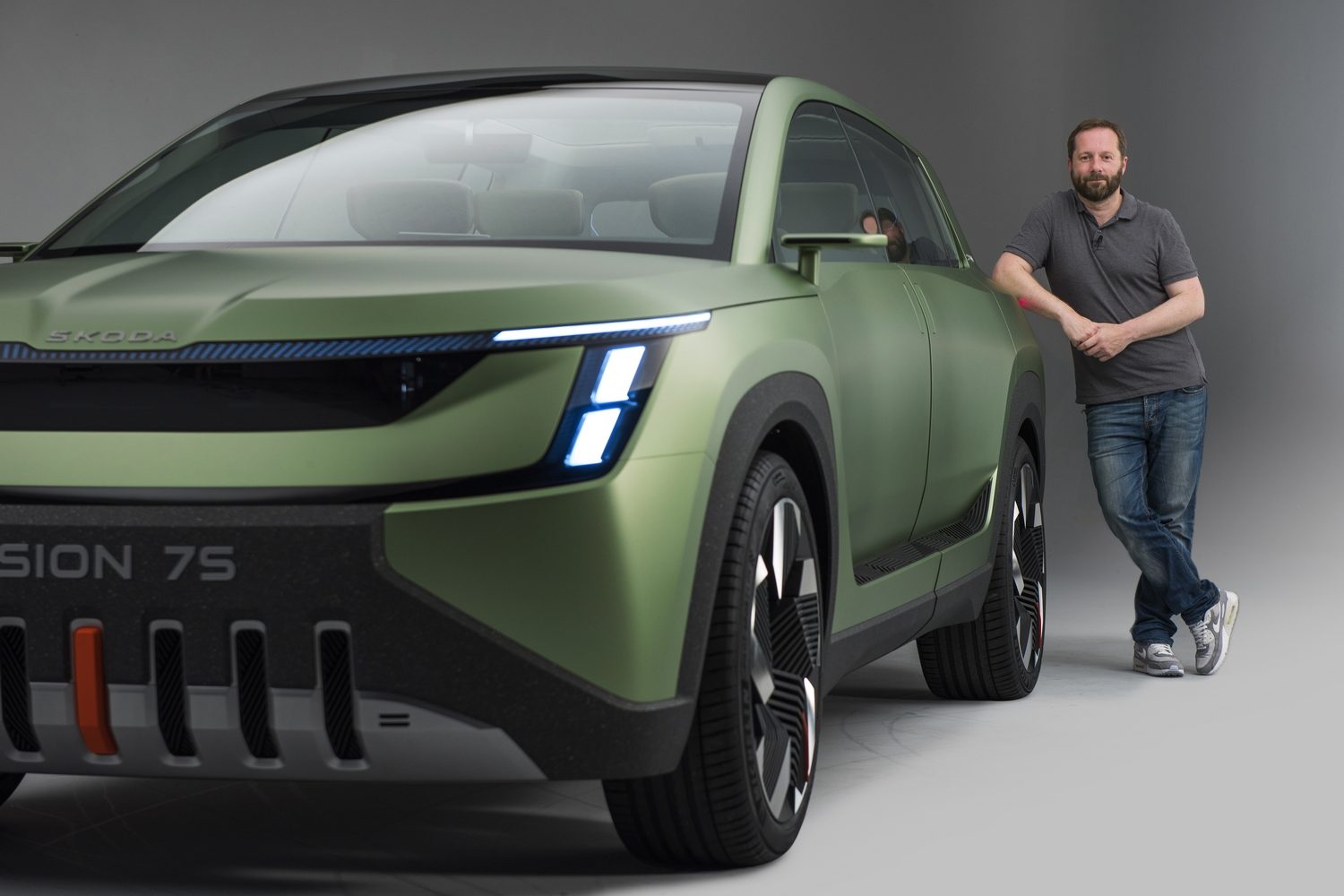The Skoda Vision 7S is more than just another concept car. Not only does it preview a fully electric seven-seat Skoda SUV that is due to go on sale by 2026, but it also allows a first look at an entirely new design language for future models and a repositioning of the brand.
Stretching out even longer than the Skoda Kodiaq, yet with a roofline that is lower than the Enyaq iV's, the Vision 7S has some dramatic proportions. A redesigned company logo replaces the familiar winged arrow emblem on the bonnet with a 'Skoda' wordmark. The new design language starts with a fresh face that discreetly includes an array of driver assistance systems. Designers refer to it as the 'Tech-Deck Face', consisting of a polycarbonate black panel that takes the place of the traditional grille. Behind this are short and long-range scanners and radar, enabling more autonomous driving technology to be added to the car in the future without altering the exterior appearance.
The rugged lower section of the front bumper uses material that is produced from recycling car tyres and has a distinctive look that is speckled with assorted colours - something that is likely to reach future production models. Vertical intakes provide cooling for the battery while the bright orange centre section can fold out to be used as a towing hook. That flash of orange repeats throughout other parts of the car including the wheels and seat belts.
Distinctive T-shaped light clusters introduce an evolution of the four-eye lighting design that is currently used on production models such as the Kodiaq. Thanks to the latest LED technology, there's a thin daytime running light on the top that extends across the top of the Tech Deck. In keeping with the futuristic concept car image the Vision 7S uses small cameras in place of exterior door mirrors, and their feed is projected onto screens on either side of the digital instrument display.
At the rear of the Vision 7S the T-shaped light cluster is repeated with the top section wrapping around the sculpted rear quarter. An elongated roof spoiler splits in two and helps the car achieve a more aerodynamic profile. If the third row of seats isn't needed, then it can fold flat into the boot floor to increase cargo capacity. Skoda also added the new company name badge to the blocky C-pillars.
Futuristic and family-friendly interior
Vast counter-hinged doors open to reveal one large aperture to enter the cabin. The front and rear seats have a sporty design and are covered in a green recycled upholstery. They feature hard backs that have a carbon-fibre-like weave and incorporate magnetic sections that people sitting behind can attach their mobile phone to for watching media. In another 'simply clever' Skoda solution, there are small backpacks magnetically installed within the seat backs for use on a day trip.
The steering wheel has a top and bottom that are flattened and two spokes at the 12 and 6 o'clock positions. Skoda's new wordmark is placed at its centre, with scroll wheels extending from either side. An 8.8-inch instrument display uses a simplified layout, with additional information being projected onto the windscreen through an augmented reality head-up display.
A 14.6-inch central touchscreen is oriented vertically and appears to float from the dashboard. Three rotary controllers sitting below the touchscreen feature inset digital displays and are used to adjust temperature and scroll through menu functions. Running through the centre of the car is a spine that also serves as the mounting point for the child seat. Unusually positioned in the centre of the car puts it, Skoda says, in the safest possible place and enables those in the rear to access the baby more easily. For those sitting in the front, a roof-mounted camera can provide a live feed so they can also keep an eye on the baby via the central display.
Vision 7S has a relax mode
Even with an impressive 600-kilometre driving range, there will be times when the Skoda Vision 7S needs to charge during a journey. When topping up the battery at rates of up to 200kW, occupants can select a 'Relax' mode. Upon activation, the front seats begin to electrically recline while the dashboard and steering wheel retract to create more cabin space. The central display rotates through 90 degrees into a landscape mode to function as a viewing screen for films or games. As the screen is further away in this position occupants can use their smartphone to act as a remote control.
More battery and range
The Vision 7S uses a version of the Volkswagen Group's modular MEB platform and uses an 89kWh battery to provide a single-charge driving range of more than 600 kilometres. Skoda has not announced any specific performance figures for the Vision 7S, but sources have indicated that the 89kWh battery will make its way into production models in the near future, potentially in a long-range Enyaq iV.
Influx of new models
Skoda is accelerating its rollout of electric models, and besides a production version of the Vision 7S, the company intends to release a mid-size electric SUV similar in size to the Karoq. A yet-to-be-named compact electric model is also slated to go on sale by 2026. Joining these electric vehicles are new generations of the Superb and Kodiaq, which will both use next-generation, plug-in hybrid powertrains.
More recycled materials on show
Keen to retain its reputation for being a producer of practical cars, Skoda is targeting more active buyers and is placing a greater emphasis on sustainability. The company already uses 13 kilograms of recycled plastics in the Enyaq iV, which come from end-of-life battery cases and car bumpers. As much as 60 per cent of the aluminium it uses is also recycled, and it offers seat upholstery that uses a mixture of virgin wool and recycled plastic bottles. Going forward, the use of recycled materials will be more obvious in and out of the cars. Designers intend to display these materials in a more raw or natural state, to enhance their visual and tactile impact in the car.
The 'greener' approach that Skoda is taking will be reflected in the brand's updated corporate identity. Complementing the new company wordmark will be the use of two different shades of green - Emerald and Electric Green - that will feature across all company websites, literature and communication to represent ecology, sustainability and electromobility.

